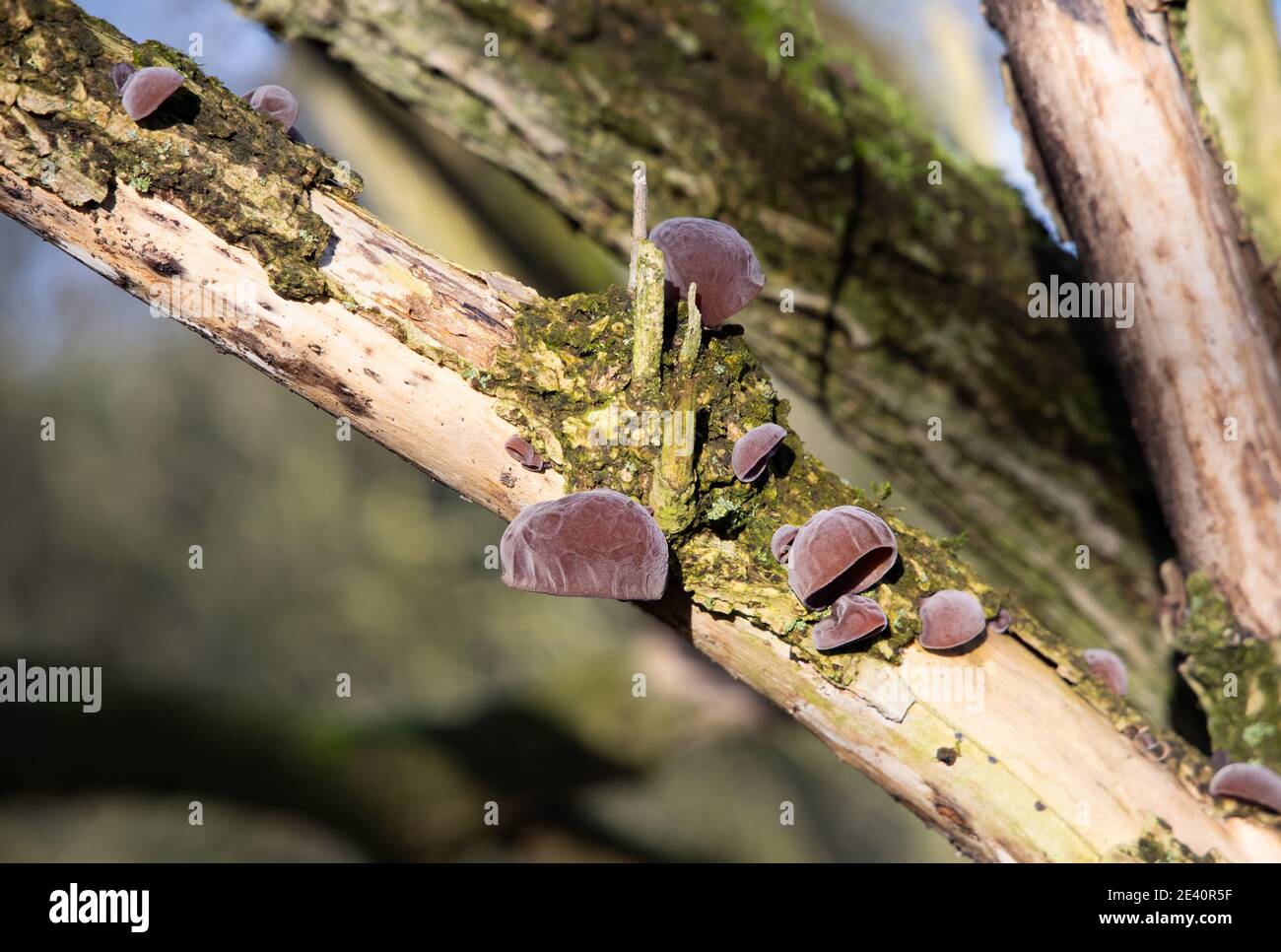
The proximate composition determination resulted 8.85% moisture, 12.27% ash, 8.58% protein, 11.03% fat, and 59.27% carbohydrate. The results showed that different concentration of carrageenan altered texture attributes and overall liking of wood-ear mushroom sausage, with 2% carrageenan formulation as the most accepted sample. In this article, 17 polymorphic SSR markers were cloned and used to differentiate the cultivars of A.

sambucina, Hirneola auricula-judae) is a fungus with almost worldwide distribution. But the confusion about cultivars has limited the development of A. Properties Judas ear (Auricularia auricula-judae, Syn.: A. Five different concentrations of carrageenan (2, 4, 6, 8 and 10%) were preliminary assessed by using hedonic test to determine three of the most preferred samples which were sausage formulated with carrageenan 2, 6 and 8%. The wood ear mushroom (Auricularia auricula-judae) is an elastic jelly mushroom with a shape that resembles an ear. growing ear mushrooms (Auricularia auricula-judae) and Shiitake mushrooms (Lentinula edodes) on media made from Gamal, Lamtoro, and Johar sawdusts. Auricularia auricula-judae, also known as black wood ear, is one of the most popular edible mushrooms in China. This research was aimed to evaluate the effect of carrageenan on texture and organoleptic properties of wood-ear mushroom sausage. The product, however, probably characterize differently compared to meat-based sausages. It was originally named Tremella auricula by Linnaeus and has been moved to different genera since, but its specific epithet was also changed from auricula to auricula-judae by Bulliard in 1789. As a food with low content of saturated fats, wood-ear mushroom can be utilized to be meat replacer of conventional sausages.


 0 kommentar(er)
0 kommentar(er)
